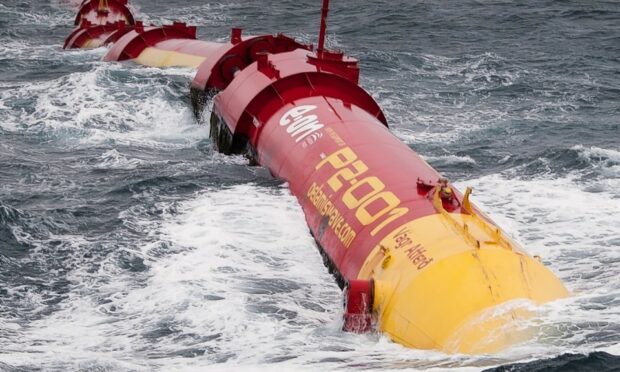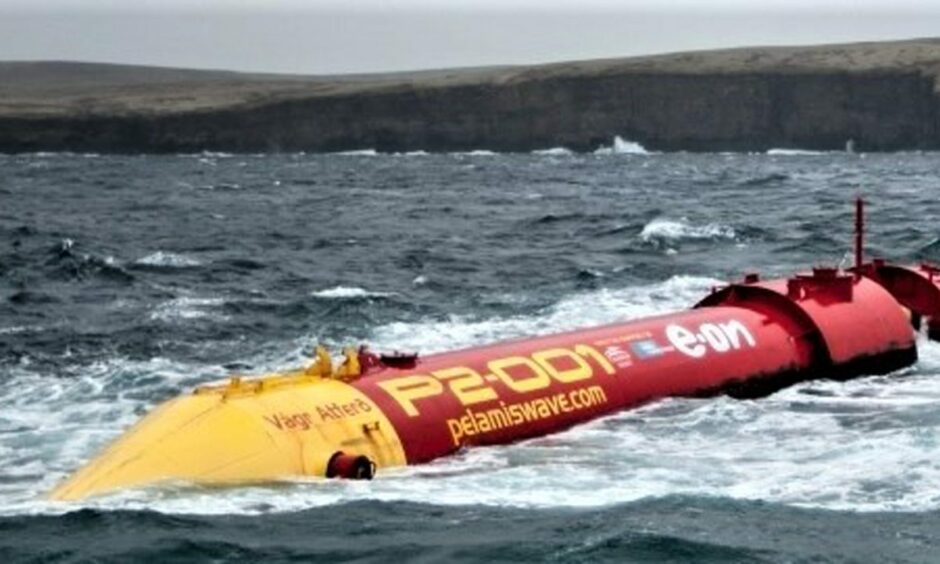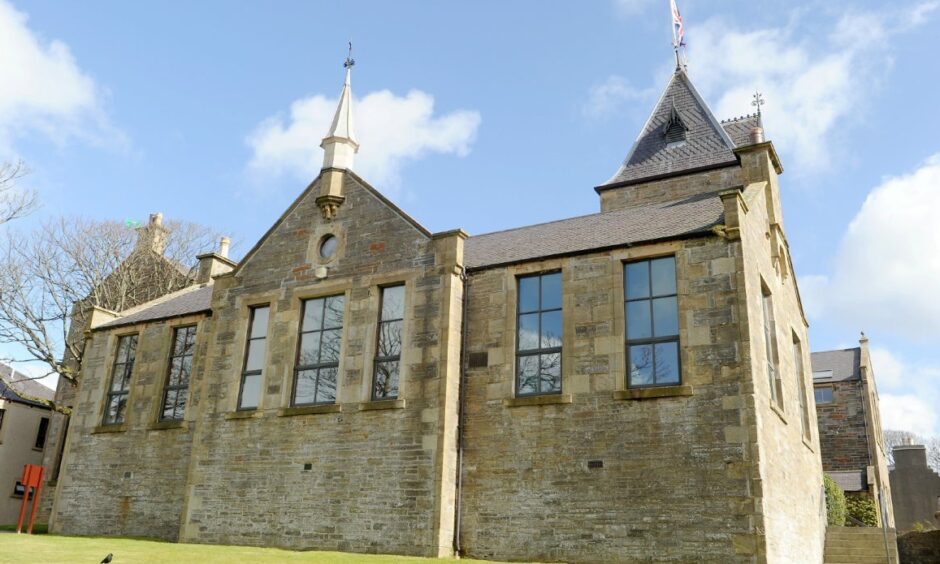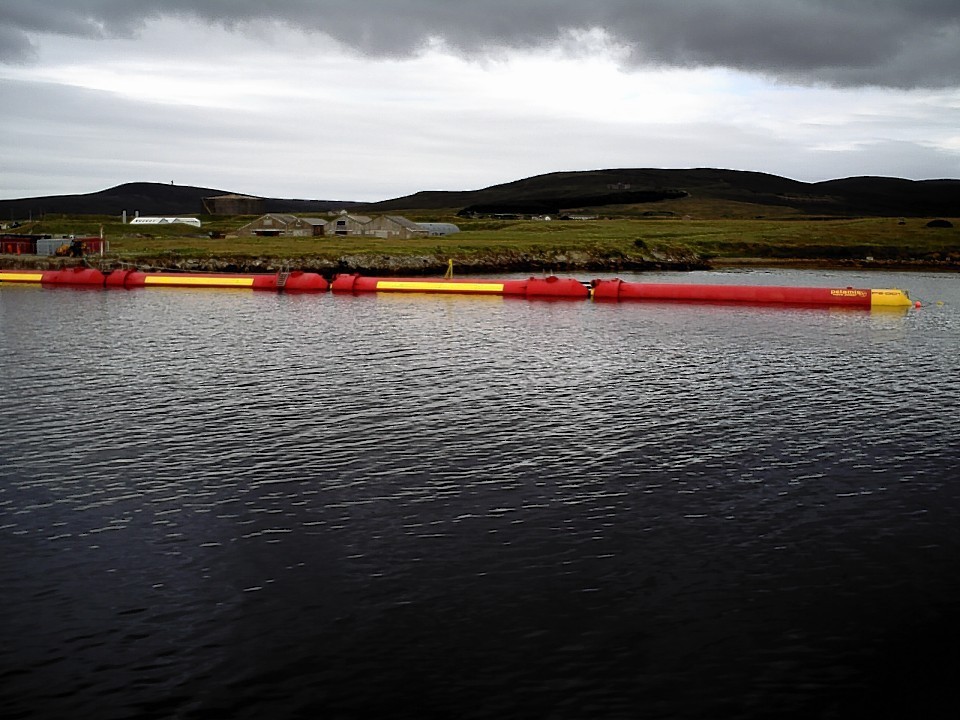Orkney Islands Council will be footing the bill for decommissioning the Pelamis wave energy device.
The Pelamis P2000 device was purchased from the European Marine Energy Centre (EMEC) for only £1 in 2017.
But as part of the deal, EMEC also provided the council a £45,000 “dowry payment” for any future decommissioning costs.
However, the council has now announced decommissioning costs are expected to be more expensive than the dowry payment.
The council will now have to “identify additional budget” to make up the difference.
The wave energy device was the last to be built by Pelamis and tested at EMEC’S Billia Croo test site.
However, Pelamis went into administration in November 2014.
At the time of the purchase, the council said it would be investigating “alternative uses” for the 590ft long device.
This included using the device as a breakwater at various locations around the county.
In November 2019, after two years of council ownership, it was agreed the device should be disposed of or sold as scrap.
It is currently moored at Lyness Pier.
Situation caused by ‘market changes’
Gareth Waterson is the council’s corporate director for enterprise and sustainable regeneration.
He said: “In 2017, risks and benefits were duly weighed up and it was felt that, at that point in time, there were potential opportunities for the device.
“With Orkney being at the forefront of ocean energy we were particularly keen to build on its heritage value, saving it as a piece of Orkney’s history, however other options were also considered including its scrap value or breakwater potential.”
Council leader James Stockan had called the device “a piece of Orkney’s recent maritime history”.
But the council says market changes have made things more difficult.
Mr Waterson added: “There’s been tremendous change in the world since 2019 that has seen increased costs for decommissioning work – whether that be due to the ripple effect of Covid or the economic crisis.”
“Consequently, several market changes have taken place in the intervening period and we’re now in the unfortunate – but unavoidable – situation of the decommissioning costs being expected to go beyond the £45,000 dowry payment from EMEC.”
How much could it cost the council?
The council is now in the process of looking for potential bidders to decommission the system.
At this stage, it is not clear how expensive the deal will be.
Orkney Council says multiple options have been explored to keep the costs down but there have been challenges.
These include a lack of suitable decommissioning facilities in Orkney, increasing fuel costs and the lack of steel in the device relative to the work required to decommission.




Conversation